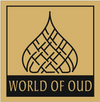Get flat 10% off
Limited time offer
Use code: OUD10
-
100% Pure Oud Oils
-
Long Lasting Fragrance
-
Crafted in Dubai, Inspired by Tradition
-
100% Pure Oud Oils
-
Long Lasting Fragrance
-
Crafted in Dubai, Inspired by Tradition
-
100% Pure Oud Oils
-
Long Lasting Fragrance
-
Crafted in Dubai, Inspired by Tradition
-
100% Pure Oud Oils
-
Long Lasting Fragrance
-
Crafted in Dubai, Inspired by Tradition
-
100% Pure Oud Oils
-
Long Lasting Fragrance
-
Crafted in Dubai, Inspired by Tradition
-
100% Pure Oud Oils
-
Long Lasting Fragrance
-
Crafted in Dubai, Inspired by Tradition

Impressive
About your brand
Pair large text with a full-width image to draw attention to an important detail of your brand or product line.










